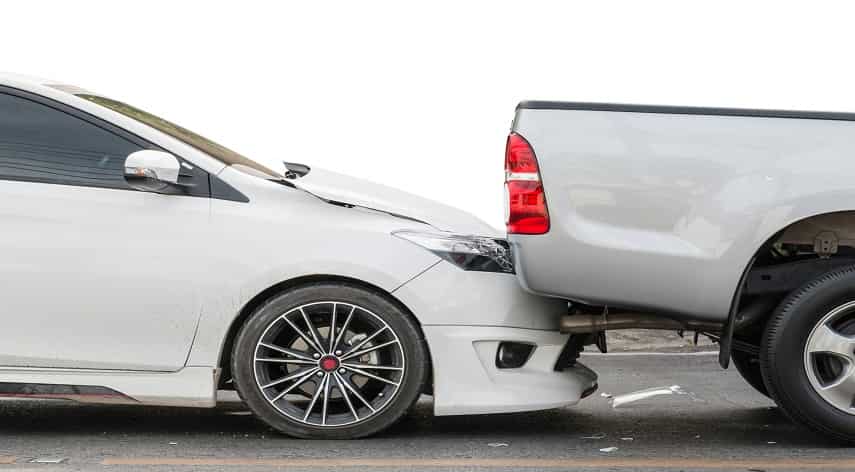How Is Fault Determined in a Rear-End Collision?

Are you confused about how to tell who’s at fault in a rear-end collision? Do you wish there was a guide out there that would tell you exactly how to decide which party is liable in this common type of car accident?
Among the accidents, many are collisions. If you’ve ever been in one, you know how frustrating the process can be trying to figure out how to handle the insurance claim.
Sounds like you? If so, stay with us. In this article, we’ll give you the key factors you need to think about when it comes to determining fault after a rear end collision. Read along to learn more!
Table of Contents
ToggleEyewitness Testimony
An eyewitness is someone who has seen the events leading up to or immediately after a crash. They can give an independent perspective on what occurred. By listening to what the eyewitness has to say about the accident, one can set up the fault of the collision.
For example, the speed of the vehicles at the time of the crash, the actions of the drivers before the collision, or any hazardous driving behaviors. It is also important to note if the driver of the rear car had an opportunity to react or slow down.
Finally, the information provided by any eyewitness can give a correct view of the events that occurred before and during the crash and thus can decide fault in collisions.
Vehicle Damage
In most cases, an individual who is at fault in a collision will have rear-end damage, such as crushed bumpers, broken taillights, dented trunk lids, etc., that can find the cause of the accident. You can determine comparative negligence by examining the damage to the vehicles that were involved in the crash.
For example, if the vehicle that hit the rear of the other had significant damage to the front of the vehicle, this could be evidence that they were more likely at fault. Damage to the front of the vehicle that was hit could show that they slowed down or braked more than the other vehicle, which would mean that they were less at fault.
Lighting
Various lighting conditions, such as darkness, fog, or rain, can limit visibility, making it difficult to decide whether either party was at fault. If they argue that the victim was in their blind spot or that the bad lighting conditions caused the accident, then this could reduce potential fault. It is important for both parties to be able to detect each other’s vehicles to avoid wrecks.
If a driver cannot see the other car due to poor lighting, then the assessment of fault might depend on the court ruling. While lighting cannot necessarily be an excuse for a collision, it can contribute to a discussion about who is at fault. It is important to understand the role lighting can play in collisions to better understand responsibility and liability.
Sudden Stop
When one vehicle hits the back of another, the angle of the impact and the amount of force used plays a factor in determining the individual’s fault. If the vehicle in front (i.e. the one being hit) slams on its brakes suddenly, that might lead to the vehicle in the rear having to stop abruptly in order to avoid hitting the vehicle in front.
In this case, the sudden stop of the vehicle in front is the cause of the over speed in the rear vehicle, making that vehicle liable for the accident. Yet, if the vehicle in the rear slams on its brakes afterward in an try to avoid the accident, then the cause of the car crash remains a matter of debate.
Distance of Vehicles
As a general rule, if Vehicle A is closer to Vehicle B than Vehicle B was to Vehicle A before the impact, then Vehicle A is likely at fault for the collision. If Vehicle B is closer to Vehicle A than Vehicle A is to Vehicle B before the impact, then Vehicle B is likely at fault. Yet, the distance of the vehicles alone is not enough to determine fault.
Factors such as the speed of the vehicles, the conditions of the roads, and the awareness of the drivers are all important in determining fault in collisions. Finally, the distance of the vehicles is just one piece of the puzzle in determining who is at fault and a thorough investigation to set up liability in a crash.
Negligence
Negligent driving is when someone fails to drive responsibly or use reasonable care while behind the wheel. In most rear-end collisions, the driver of the rear car is almost always held responsible for the accident.
If the driver was not paying attention to the road ahead, speeding, or in any other way not driving responsibly, then that driver was more than likely negligent and thus at fault for any resulting damages or injuries. Even if the driver of the front car stopped suddenly, if the rear driver was not paying attention and could not have reacted quickly enough to prevent the crash, the rear driver is still considered at fault.
How to Avoid Rear End Collisions
To do this, make sure you are always keeping a safe distance between yourself and the vehicle in front of you. Be aware of sudden stops or changes in lane direction, and do not tailgate. Additionally, make sure to always follow the speed limit and to keep alert and focused on the road to expect any incoming traffic.
Staying mindful of the lane markers and road signs will help you stay on the right track while driving. Additionally, if you find yourself being rear-ended, take note of the other driver’s license number, insurance company, and vehicle details, and start finding the best accident lawyer for legal help if necessary.
Avoid Rear End Collision Today
In most rear end collisions, the fault is by taking a thorough assessment of the facts at hand. Careful evaluation of the details of the incident allows for a decision to be made about who was at fault in the collision.
Speak to an experienced lawyer to help you assess your rights and options for a collision.
Did you find this article helpful? If so, read our blog today for more information!
Pankaj Majumder, a seasoned Civil Engineer, combines technical expertise with a passion for innovative infrastructure solutions. With a strong academic background and diverse project experience, he excels in creating sustainable and resilient structures that shape the future of urban development.
Recommended For You
Spread the loveInstagram is a visually driven platform, and understanding how aspect ratios work can significantly impact the success of
Spread the loveHave you ever received a call from an unknown number, and upon searching online, found nothing but dead
Spread the love/zzmxuo4he_c for Non Techies A Step by Step Guide is a guide that will teach you the basics





